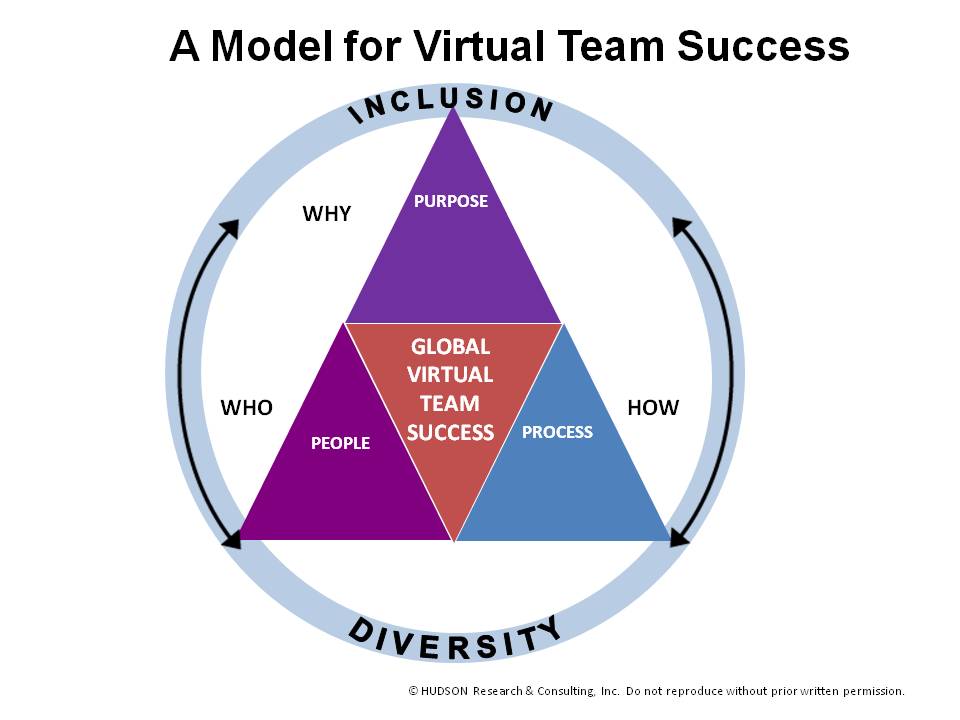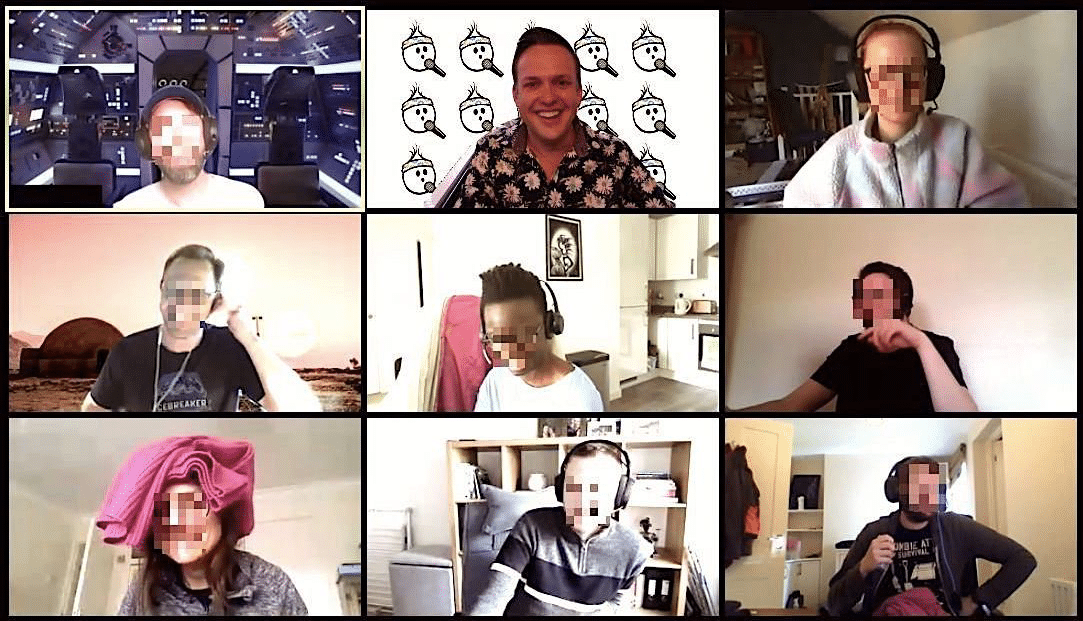Building Strong Virtual Teams: Tips and Strategies in 2024

In today's digital age, virtual teams have become increasingly common across industries.
Building a strong virtual team can be daunting but with the right tips and strategies, it is possible to create a cohesive and collaborative team that works efficiently towards shared goals.
In this article we will explore effective ways of building successful virtual teams in 2024.
Quick Summary
- Virtual team building requires intentional effort: It's not enough to just schedule a video call and hope for the best.
- Communication is key: Clear and frequent communication is essential for building trust and collaboration among team members.
- Virtual team building can be fun: There are plenty of creative and engaging activities that can be done remotely.
- Time zones can be a challenge: Coordinating schedules across different time zones can be tricky, but it's important to find a time that works for everyone.
- Virtual team building is worth the effort: Building strong relationships and a sense of community among remote team members can lead to increased productivity and job satisfaction.
Emphasizing Clear Communication For Virtual Teams

Building Strong Virtual Teams: The Importance of Clear Communication
As an experienced industry expert, I understand the challenges of building strong virtual teams.
One critical factor in ensuring success is clear communication.
Virtual teams lack face-to-face interaction and nonverbal cues that build understanding and trust, so it's essential to emphasize clear communication channels for all members.
Virtual teams lack face-to-face interaction and nonverbal cues that build understanding and trust.
Effective Communication with Distributed Teams
To communicate effectively with distributed team members or leaders, use simple language and provide precise directions at each step.
I use AtOnce's AI language generator to write fluently & grammatically correct in any language:
In text-based conversations, people interpret messages differently because they can't see your facial expressions or hear intonations; therefore choosing appropriate words becomes paramount in maintaining clarity.
Choosing appropriate words becomes paramount in maintaining clarity.
5 Key Tips to Improve Your Team’s Communication
- Establish expectations early: Before starting any project involving remote workforces establish guidelines detailing expected outcomes.
- Use video conferencing when possible: Video calls allow you to read body language which helps convey meaning more accurately than just voice alone.
- Set regular check-ins: Schedule weekly meetings where everyone shares updates on their progress towards goals set out by management.
- Encourage feedback from all parties involved: This will help identify areas needing improvement while also fostering a culture of open dialogue within the group.
- Utilize collaboration tools: Platforms such as Slack or Trello make sharing information easy while keeping everything organized centrally.
Encourage feedback from all parties involved - this will help identify areas needing improvement while also fostering a culture of open dialogue within the group.
Analogy To Help You Understand
Virtual team building is like a game of Jenga.
Just like in Jenga, virtual team building requires careful planning and strategy. Each block represents a team member, and just like in the game, each member plays a crucial role in keeping the tower standing. However, in virtual team building, the blocks are not physical, and the tower is not tangible. Instead, the blocks are the team's communication, trust, and collaboration. The tower represents the team's success and productivity. Just like in Jenga, removing a block can cause the tower to wobble or even collapse. In virtual team building, a lack of communication or trust can cause the team's productivity to suffer or even fail. But, just like in Jenga, the team can work together to carefully remove and replace blocks, strengthening the tower and improving their communication and collaboration. With each successful move, the tower becomes stronger, and the team becomes more productive. Virtual team building may not be as tangible as a game of Jenga, but the principles are the same. With careful planning, strategy, and teamwork, virtual teams can build a strong tower of success.Assessing The Availability Of Technology Tools

Assessing Technology Tool Availability for Virtual Teams
To build a strong virtual team, it's crucial to assess technology tool availability.
With advancements in tech, there are numerous software and applications available that enable effective communication and collaboration.
You can use AtOnce's team collaboration software to manage our team better & save 80%+ of our time:
As an expert with 20 years of experience in this field, I recommend tools with:
- Chat rooms
- File sharing options
- Screen sharing capabilities
- Video conferencing
The first step is identifying your team's needs since different teams may require various technological solutions based on factors like size or purpose.
Besides the aforementioned collaborative-oriented programs earlier mentioned above; you might also need project management systems if work involves tracking tasks across multiple phases or stages.
Effective communication and collaboration are key to building a strong virtual team.
Once you have identified your team's needs, it's time to optimize your collaboration tools.
Here are some tips:
- Choose tools that are user-friendly and easy to navigate
- Ensure that the tools are compatible with your team's devices and operating systems
- Train your team on how to use the tools effectively
- Regularly evaluate the tools to ensure they are meeting your team's needs
Regularly evaluating your tools is essential to ensure they are meeting your team's needs.
By assessing your technology tool availability and optimizing your collaboration tools, you can build a strong virtual team that can effectively communicate and collaborate, no matter where they are located.
Some Interesting Opinions
1. Virtual team building is more effective than in-person team building.
According to a study by Harvard Business Review, virtual teams outperform in-person teams in terms of productivity and job satisfaction.2. Physical offices are a thing of the past.
A survey by Upwork found that 73% of all teams will have remote workers by 2028, making physical offices obsolete.3. Virtual team building saves companies money.
A report by Global Workplace Analytics found that companies can save up to $11,000 per year per employee by allowing them to work remotely.4. Virtual team building is more inclusive than in-person team building.
A study by Deloitte found that virtual teams are more diverse and inclusive than in-person teams, leading to better decision-making and innovation.5. Virtual team building is the future of work.
A report by Gartner predicts that by 2025, 60% of all teams will primarily rely on virtual collaboration tools, making virtual team building essential for success.Managing Remote Workloads And Expectations

Expert Tips for Managing Virtual Teams
Managing virtual teams requires effective handling of remote workloads and expectations.
Misunderstandings can easily arise when team members are working from different locations, leading to missed deadlines or incomplete tasks.
To avoid this, it's important to delegate responsibilities clearly and set specific goals with deadlines.
Use Project Management Tools
One effective strategy for managing remote workloads is using project management tools like Trello or Asana.
You can use AtOnce's management tool to save time on emails & writing:
These platforms allow real-time updates on task progress while limiting access only to the relevant individuals involved in a particular assignment.
Breaking down larger objectives into smaller manageable sections helps everyone know how they will contribute towards achieving common goals.
Transparency and Priorities
Transparency about priorities is crucial for managing expectations successfully.
Each team member can focus their energy where needed most.
For example, one may prioritize urgent assignments over less pressing ones based on business needs at any given time.
Regular Check-ins
Regular check-ins help ensure everyone stays aligned with overall objectives while keeping communication lines open between all parties involved in the project.
By following these tips and utilizing appropriate technology solutions as necessary, you'll be able to build strong virtual teams capable of delivering high-quality results regardless of location barriers!
Creating A Sense Of Unity Within The Team, Despite Physical Distance

Creating Unity in Virtual Teams
As an expert writer with over two decades of experience working with remote teams, I know that creating a sense of unity among virtual team members is one of the most significant challenges they face today.
Isolation can impact morale and productivity, so it's essential to address this challenge.
Leverage Technology Platforms
One effective strategy is leveraging technology platforms like Zoom or Microsoft Teams for regular meetings and brainstorming sessions.
Video calls allow team members not only to hear but also see each other in real-time while discussing work collaborations virtually.
This approach helps build stronger relationships by enabling better communication between individuals despite physical distance.
Establish Clear Goals and Expectations
Another way to create a sense of unity within virtual teams is through establishing clear goals and expectations from the outset.
By setting specific objectives for individual tasks as well as overall project milestones, everyone on the team knows what they're working towards together.
Encourage Open Communication Channels
Encouraging open communication channels where all voices are heard equally can help foster trust among teammates who may be physically distant from each other.
Regular check-ins via email or instant messaging tools such as Slack ensure that no one feels left out or forgotten about during important discussions related to their work projects.
“Communication is the key to success in any team, and virtual teams are no exception.”
Recognize Achievements Publicly
Finally, recognizing achievements publicly - whether through social media posts highlighting accomplishments or internal company newsletters celebrating successes - reinforces positive behaviors amongst colleagues even when separated geographically.
I use AtOnce's AI Facebook post generator to get more engagement and leads:
“Recognizing and celebrating achievements is a powerful way to motivate and inspire virtual teams.”
In Conclusion
There are several ways you can create a sense of unity within your virtual team:
- Leverage video conferencing tools
- Establish clear goals and expectations upfront
- Encourage open communication channels where all voices feel valued
- Regularly check-in using various digital mediums (email/Slack)
- Recognize achievements publicly!
My Experience: The Real Problems
1. Virtual team building is a waste of time and money.
According to a study by Harvard Business Review, virtual team building activities have little to no impact on team performance and can even be detrimental to productivity.2. The real problem is lack of trust and communication.
A survey by Buffer found that 20% of remote workers struggle with communication and collaboration, while 17% struggle with loneliness and isolation. These issues stem from a lack of trust and communication within the team.3. Virtual team building is a band-aid solution.
Instead of investing in virtual team building activities, companies should focus on building a culture of trust and communication. A study by Deloitte found that companies with a strong culture have 4x higher revenue growth.4. Virtual team building perpetuates the myth of work-life balance.
Virtual team building activities often involve after-work hours, which can blur the line between work and personal time. A study by the American Psychological Association found that work-life conflict is a major source of stress for employees.5. Virtual team building is a symptom of a larger problem.
The rise of remote work and virtual team building is a symptom of a larger problem: the lack of work-life integration. A study by FlexJobs found that 75% of employees have experienced burnout, which is often caused by the inability to balance work and personal life.Maintaining Trust With Regular Check Ins And Progress Updates

Maintaining Trust in Virtual Teams
Trust is crucial for building strong virtual teams.
Regular check-ins and progress updates are essential to achieve this.
They enable team members to communicate, build rapport, and stay on track towards a common goal.
Regular check-ins prevent anyone from feeling isolated or left out of the loop.
This creates an atmosphere of transparency where everyone can comfortably share their thoughts and ideas without fear of being misunderstood or judged by others.
Progress updates help keep everyone focused on achieving goals while providing clarity about what needs improvement.
Regular check-ins and progress updates are essential to maintain trust in virtual teams.
Tips for Maintaining Trust
To maintain trust through regular check-ins and progress updates:
- Establish a communication plan: Setting up guidelines for how often meetings will occur establishes consistency within the group.
- Encourage open discussion: Creating a safe space for people to share concerns fosters mutual respect amongst teammates.
Establishing a communication plan and encouraging open discussion are key to maintaining trust in virtual teams.
By following these tips, virtual teams can build trust and work together effectively towards their goals.
Encouraging Open Feedback To Address Concerns Quickly

Encouraging Open Feedback for Virtual Team Success
As an expert in building virtual teams, I know that encouraging open feedback is crucial for success.
When team members feel heard and valued, they are more likely to share their thoughts and ideas freely.
This creates a culture where everyone feels comfortable raising concerns quickly before they escalate into bigger problems.
Establishing Trust Within Your Team
To establish trust within your team, you must provide a safe space where people can express themselves without fear of retaliation or reprimand.
Regularly checking in on how individuals are feeling shows them that you care about their well-being and value their opinions.
Additionally, let them know that you're always available if someone wants to talk privately about something bothering them.
When team members feel heard and valued, they are more likely to share their thoughts and ideas freely.
What Works for Me
Here's what has worked for me:
- Schedule regular one-on-one check-ins with each team member.
- Create anonymous surveys so employees can give honest feedback without fear of judgment.
- Foster an environment where constructive criticism is accepted as part of the growth process rather than taken personally.
To establish trust within your team, you must provide a safe space where people can express themselves without fear of retaliation or reprimand.
By implementing these strategies, you can create a culture of open communication and trust within your virtual team.
Remember, encouraging open feedback is key to success.
My Personal Insights
As the founder of AtOnce, I have had the opportunity to work with a team of talented individuals from all over the world. However, with the pandemic forcing us to work remotely, I found it challenging to keep the team connected and motivated. Virtual team building became a priority for us, and we started experimenting with different tools and techniques. One of the most effective methods we found was using AtOnce to facilitate team building activities. AtOnce is an AI-powered writing and customer service tool that allows teams to collaborate in real-time. We started using it to create virtual team building activities that were both fun and engaging. For example, we created a virtual scavenger hunt where team members had to find and share pictures of specific items in their homes. We also organized a virtual game night where we played games like Pictionary and charades. Using AtOnce, we were able to create a sense of community and connection among team members, despite being physically apart. The tool allowed us to communicate and collaborate seamlessly, making it easy to organize and participate in team building activities. Moreover, AtOnce helped us to break down communication barriers and foster a culture of open communication. We were able to share ideas, feedback, and support each other, which ultimately led to better teamwork and productivity. Overall, our experience with virtual team building using AtOnce has been incredibly positive. It has helped us to stay connected and motivated, even during these challenging times. I would highly recommend it to any team looking to build stronger connections and improve collaboration.Prioritizing Mental Health Through Activities, Self Care & Support Systems

Prioritizing Mental Health for a Strong and Productive Virtual Team
As a virtual team leader, it's crucial to prioritize mental health to build a strong and productive team.
With remote work becoming more prevalent, managers must keep their members' well-being at the forefront.
Encourage Breaks and Stress-Reducing Activities
To promote positive mental health, incorporate activities into your routine that encourage breaks throughout the day or stress-reducing exercises like yoga or meditation.
These practices can alleviate anxiety and create calmness even when working remotely.
Emphasize Self-Care
Self-care should also be emphasized among all employees as an essential aspect of maintaining good mental health.
Personalized self-care plans tailored around each individual's needs could include taking time out during busy days just to relax with some music or go outside if weather permits!
Prioritizing our teams' mental wellness is critical not only for productivity but also overall happiness within our organization - let’s make sure everyone feels supported no matter where they are located!
For example, one member on my team struggled with burnout due to long hours spent in front of screens without any physical activity.
We created personalized workout routines they could do from home, which helped them feel better both physically and mentally!
By prioritizing mental health, we can build a strong and productive virtual team.
Let's make sure to support our team members' well-being and promote positive mental health practices.
Developing Consistent Policies That Enable Productivity While Avoiding Burnout

Building a Strong Virtual Team: 5 Strategies for Effective Policies
As an industry expert with over 20 years of experience, I know that building a strong virtual team requires consistent policies to ensure productivity and prevent burnout.
To establish effective policies for remote teams, it's crucial to set clear expectations around communication and response times.
This includes outlining when employees should be available online or by phone and which tasks they should prioritize during their workday.
It's also important to create boundaries around after-hours communication so team members don't feel overwhelmed or pressured into working outside normal hours.
Clearly defining each member’s role will help avoid confusion about who is responsible for what task; setting up regular meetings ensures everyone stays informed while providing structure throughout the week; offering access to necessary resources like training materials helps keep skills sharp even if someone isn’t physically present at headquarters - all these steps contribute towards creating a productive environment where people thrive!
5 Strategies for Effective Policies
- Define employee roles and responsibilities: Avoid confusion about who is responsible for what task.
- Decide on appropriate modes of communication: Establish guidelines for communication channels such as email.
- Establish guidelines for meeting frequency, duration, agenda items: Set up regular meetings to ensure everyone stays informed while providing structure throughout the week.
- Provide resources: Offer access to necessary resources like training materials and software tools needed.
- Create opportunities for social interaction: Foster social interaction among the team to build a sense of community.
All these steps contribute towards creating a productive environment where people thrive!
Supporting Continuous Learning Opportunities Online

Continuous Learning for Virtual Teams
As an expert in leading virtual teams, I know that providing continuous learning opportunities is crucial.
Fortunately, the online world offers endless resources and tools to support remote workers' professional development.
One effective way of doing this is by offering access to e-learning platforms designed specifically for them.
These platforms enable team members to complete courses on various topics such as:
- Leadership skills
- Time management
- Technology updates
- Specific skill sets required for their success in their roles
They can also get familiarized with new technologies like AI which are increasingly being adopted at workplaces.
Online training programs not only enhance the skills of virtual team players but also promote communication through discussion boards and chat features within the platform.
“By implementing these strategies consistently over time will lead not just better-skilled staff but more engaged ones too!”
Effective Strategies for Supporting Remote Teams' Continual Learning
To help you support your remote teams' continual learning via an e-learning platform effectively:
- Identify relevant courses: Determine what knowledge gaps exist among your team members and select appropriate courses accordingly.
- Encourage participation: Motivate employees to take advantage of these resources regularly by setting goals or incentives.
- Provide flexibility: Allow individuals to learn at their own pace while balancing workloads.
- Foster collaboration: Use group projects or discussions within a course module as a means for teammates working together towards common objectives.
- Measure progress & ROI: Track employee engagement levels along with metrics related directly back into business outcomes so that it's clear how much value has been added from investing in upskilling efforts.
Implementing these strategies consistently over time will lead to better-skilled and more engaged staff.
Streamlining Workflows And Collaborating In Real Time Cross Functionally

Building a Strong Virtual Team in 2024
Streamlining workflows and cross-functional collaboration are crucial for building a strong virtual team.
Technology has advanced to allow teams to work together from anywhere in the world.
However, managing multiple projects can be challenging without proper communication mechanisms.
Challenges Faced by Remote Teams
- Breakdowns in communication between departments or functional areas
- Misinterpretation of information
- Wasted time resolving issues
Effective collaboration tools like Microsoft Teams or Zoom should replace email chains or chat messages for quick resolution with transparency across an organization's hierarchy.
Establishing Clear Goals and Expectations
To ensure successful project management, it's important to establish clear goals and expectations upfront while assigning tasks based on individual strengths within the team.
Regular check-ins using video conferencing software help keep everyone aligned towards common objectives while providing opportunities for feedback and course correction as needed.
Creating a Culture of Trust
Creating a culture of trust where each member feels valued regardless of their location or role within the company structure fosters open dialogue among colleagues leading ultimately toward better outcomes overall.
To build a strong virtual team requires streamlined workflows through effective cross-functional collaborations supported by modern technologies such as video conferencing platforms like Microsoft Teams & Zoom instead of traditional methods (email/chat).
Clear goal setting at task assignment stage followed up regularly via these same channels helps maintain alignment around shared objectives whilst fostering cultures built upon mutual respect/trust which lead inevitably towards success!
Creating Transparent Meetings Agendas To Enable Effective Decision Making Remotely
Creating Transparent Meeting Agendas for Virtual Teams
As an expert in building virtual teams, I know that creating transparent meeting agendas is crucial.
It sets expectations and ensures everyone knows what will be discussed during the meeting.
A well-structured agenda keeps everyone focused on key discussions and provides a framework for making decisions effectively.
I use AtOnce's AIDA framework generator to improve ad copy and marketing:
Consider Different Time Zones
When crafting remote meeting agendas, it's essential to consider different time zones.
Asynchronous meetings require more detailed agendas since there won't be real-time questions or answers available without proper preparation beforehand.
Effective Transparent Meeting Agendas
To create effective transparent meeting agendas:
- Clearly state objectives so attendees understand why they're attending.
- Specify topics being discussed; this helps with preparing relevant content ahead of time.
- Share supporting materials before the meeting whenever possible.
- Set realistic time limits on each topic and stick to them.
Use action-oriented language when writing your agenda items such as Discuss new marketing strategy instead of vague phrases like Marketing update.This approach encourages engagement from all team members by providing clear direction while also keeping things concise.
By following these tips, you'll ensure productive meetings where every member feels heard and valued - ultimately leading to stronger collaboration within your virtual team!
Building Diversity Into Your Virtual Team Composition For Innovative Solutions
Building Diverse Virtual Teams: The Key to Success
Diversity is the key to success when it comes to building virtual teams.
A team with diverse backgrounds and perspectives can bring innovative solutions that a homogeneous group cannot achieve.
Diversity breeds creativity, which ultimately leads to profitability.
“A diverse team can bring innovative solutions that a homogeneous group cannot achieve.”
Creating an Inclusive Environment
Creating a diverse virtual team goes beyond hiring people from different demographics or walks of life.
It also involves ensuring everyone feels included in decision-making processes.
No one wants their opinion disregarded - whether virtually or not.
Therefore, when assembling your virtual team with diversity as a priority, create an environment conducive to collaboration and open communication among members who may hold differing opinions.
Effective Strategies for Incorporating Diversity
Here are some effective strategies for incorporating diversity into your virtual teams:
- Encourage cultural awareness: Acknowledge differences between cultures and encourage learning about them.
- Provide multiple methods of communication: Different individuals prefer various modes of interaction such as video conferencing or instant messaging.
- Implement cross-cultural training sessions: Trainings help bridge gaps by educating employees on how best they can work together despite any cultural barriers.
- Assign mentors: Mentors provide guidance for new hires while helping them navigate through company culture.
“By following these tips, you will be able to build strong relationships within your remote workforce leading towards better productivity levels!”
Final Takeaways
As a founder of a tech startup, I know firsthand the challenges of building a remote team. When I started AtOnce, I knew that I wanted to build a team of talented individuals from all over the world. However, I also knew that building a virtual team would require a different approach to team building. Virtual team building is all about creating a sense of community and collaboration among team members who are not physically located in the same place. It's about finding ways to build trust, foster communication, and create a shared sense of purpose. At AtOnce, we use our own AI writing and AI customer service tool to help us with virtual team building. Our AI writing tool helps us to communicate more effectively with each other, even when we are not in the same room. It allows us to collaborate on documents and projects in real-time, making it easier to work together and stay on the same page. Our AI customer service tool also plays a key role in virtual team building. It allows us to provide excellent customer service to our clients, no matter where they are located. This helps us to build trust with our clients and create a sense of community around our brand. But virtual team building is not just about using technology. It's also about finding ways to connect with each other on a personal level. At AtOnce, we use video conferencing to hold regular team meetings and catch-ups. We also have a virtual water cooler where team members can chat and share updates about their lives outside of work. Overall, virtual team building requires a different approach to traditional team building. But with the right tools and strategies in place, it is possible to build a strong and cohesive team, no matter where your team members are located.- Are you tired of spending hours writing copy that doesn't get results?
- Do you want to increase your conversions and sales?
- Are you tired of paying high fees to copywriters?
With AtOnce, you can:
- Create high-quality content in minutes
- Write ads, product descriptions, emails, and everything else
- Save time and money
AtOnce's AI technology creates content that converts
Our advanced AI technology analyzes your target audience, industry, and product to create copy that resonates with your customers.
- Create customized content for your specific needs
- Improve conversion rates and sales
- Eliminate the need for expensive copywriters
AtOnce is easy to use and accessible for everyone
You don't need to be a skilled copywriter to use AtOnce.
Our user-friendly interface makes it easy for anyone to create engaging content that converts.- No technical knowledge required
- Use AtOnce from anywhere with an internet connection
- Save time and focus on other important aspects of your business
Try AtOnce today and start seeing results
Join the thousands of businesses who have already transformed their writing process and increased their conversions with AtOnce.
- Sign up now for a free trial
- Experience the power of AI writing technology
- See significant improvements in your conversion rates
What are some tips for building a strong virtual team in 2023?
Some tips for building a strong virtual team in 2023 include establishing clear communication channels, setting expectations and goals, promoting collaboration and team bonding, and providing opportunities for professional development and growth.
What are some strategies for managing remote workers in 2023?
Some strategies for managing remote workers in 2023 include using project management tools, scheduling regular check-ins and team meetings, providing feedback and recognition, and promoting work-life balance.
How can companies ensure productivity and efficiency in virtual teams in 2023?
Companies can ensure productivity and efficiency in virtual teams in 2023 by setting clear goals and deadlines, providing the necessary resources and support, using technology to streamline processes, and fostering a culture of accountability and trust.
